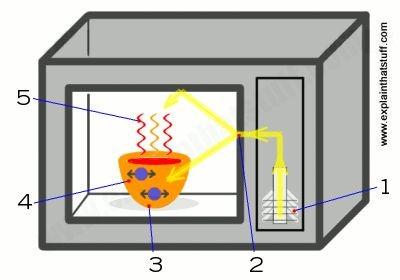Informative Report: DraftOverview Choose a familiar household appliance (such as a vacuum cleaner, toaster, or hair dryer).Write a 1–2 page mechanism description (written in your own words) telling an
Running head: TITLE OF YOUR PAPER 1
Assignment 4: “Informative Report”
Student Name
Professor: Christopher Swindell
How a microwave oven cooks
Have you ever wondered how the funny looking box on your kitchen counter gets your food hot without the use of fire and how it is able to do it in just a matter of minutes? Well, in this paper I will a teach you how this is possible and show you how a microwave actually works.
First things first. Let me fill you in on the history of the microwave oven (Anderson, 2018). The microwave oven was developed accidently by Percy Spencer, who worked for Raytheon in 1946 and had a peanut bar in his pocket which began to cook when he was standing near a magnetron (big word I’ll explain in a moment). After discovering this he began doing his own tests and getting patents for his work. By 1955 Raytheon designed its first microwave oven for consumers priced at $1295, but it didn't start showing up in households until around 1965.
How do microwaves cook food? This graphic with explanation should help.

Inside the strong metal box, there is a microwave generator called a magnetron. When
you start cooking, the magnetron takes electricity from the power outlet and converts it into high-powered, 12cm (4.7 inch) radio waves.
The magnetron blasts these waves into the food compartment through a channel called a wave guide. What’s a magnetron? Well, it’s not a rogue Transformer who obeys Decepticon! It’s sort of a mini generator that creates a magnetic field.
The food sits on a turntable, spinning slowly round so the microwaves cook evenly.
The microwaves bounce back and forth off the reflective metal walls of the food compartment, just like light bounces off a mirror. When the microwaves reach the food itself, they don't simply bounce off. Just as radio waves can pass straight through the
walls of your house, so microwaves penetrate inside the food. As they travel through it, they make the molecules inside it vibrate more quickly.
Vibrating molecules have heat so, the faster the molecules vibrate, the hotter the food becomes . Thus the microwaves pass their energy onto the molecules in the food, rapidly heating
it up (Jacques, 2014).
Things to remember when operating a microwave oven:
Never operate with wet hands. This could be fatal which could lead to death.
Do use glass, ceramic, or microwave safe plastic containers
Never put metal in the microwave oven.
Keep out of reach of children
Don't cook all foods for the same time
Stir food occasionally
Don't microwave food uncovered
Don't thaw meat
Always keep your microwave clean
Let’s wrap things up. Today you learned the history of microwave ovens, how they work and what not to do when using a microwave oven. Knowing all of this is important especially if you are put in a situation where you are routinely using one. These devices are convenient and helpful. Having the awareness and skill to use them properly is critical.
(I chose this device because it is fairly easy to describe its workings to the audience in the assignment. Radio and radiation waves are an important science lesson, and what better way to introduce them than using a common household appliance).
References
Ackerman, E. (2018). “A Brief History of the Microwave Oven” http://spectrum.ieee.org
Jacques, L (2014) “10 important do's and Sony's od microwave cooking” Www.foodal.com



